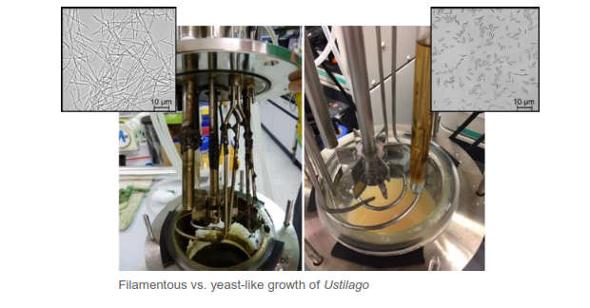International Partner Search
Innovation & Technology Offer
Morphologic optimization of fungi.
Country of Origin: Germany
Reference Number: TODE20180817002
Publication Date: 17 August 2018
Summary
A German university offers an innovative way of optimizing fungi morphologically. This is done by the engineering of basidiomycota for biotechnological processes. The new process enables easier and more stable processes with yeast-like fungi. Industrial partners from the field of biotechnology are sought for license agreements.
Description
Fungi play an important role in biotechnological processes for the production of organic acids, enzymes, antibiotics, polyols, vitamins, (glyco-)lipids, and a wide variety of other secondary metabolites. However, the filamentous morphology of many fungi poses harsh constraints on process design and scale-up. Fungal morphology is highly sensitive to medium impurities and heterogeneities, making it hard to control in large-scale processes. This leads to high process costs and a high risk of batch failure.
Non-conventional yeasts such as the basidiomycetes ustilago and pseudozyma do not have this disadvantage, but under stress conditions, which are typically encountered in biotechnological processes, they can start to grow filamentously with the above-mentioned consequences.
In the innovation, offered by a German university, the fungal host cell is morphologically arrested via genetic engineering in its most suitable yeast-like growing form. No more filamentous growth occurs, even under stress conditions such as low pH or high osmolarity. The clear advantage of this innovation was demonstrated on the biotechnological production of itaconic acid, enabling the use of ustilago cynodontis, which otherwise grew filamentously, for the production of itaconic acid at low pH. The morphological engineering targets are highly conserved, making the innovation widely applicable in the fungal group of basidiomycota, including Ustilago, Pseudozyma, Dacryopinax, Moniliella, and many other industrially relevant genera.
The university offers licenses. Potential partners are biotech companies who produce compounds, such as e.g. carboxylic acids in certain fungi and who would like to work with improved processes.

Advantages and Innovations
This innovation offers completely new possibilities for the biotechnological production via fungal strains. It overcomes constraints of conventional methods and renders possible controlled biotechnological production of organic acids and other compounds.
Advantages include:
• Easier and more stable processes with yeast-like fungi
• No more filamentous growth
Stage Of Development
Under development/lab tested
Stage Of Development Comment
Proof of function
Requested partner
The university is offering licenses for the invention to interested companies. Potential partners come from the biotechnology sector. They would be active in organic acids production. They would use the new method and improve the production process.
Cooperation offer is closed for requests
